Physical Address
304 North Cardinal St.
Dorchester Center, MA 02124
Physical Address
304 North Cardinal St.
Dorchester Center, MA 02124

lovingmyhomeblog.com contains affiliate links and is a member of the Amazon LLC Associates Program. If you make a purchase using one of these Amazon links, I may receive a commission at no extra cost to you. See my Privacy Policy for more information.
Popular House Plants
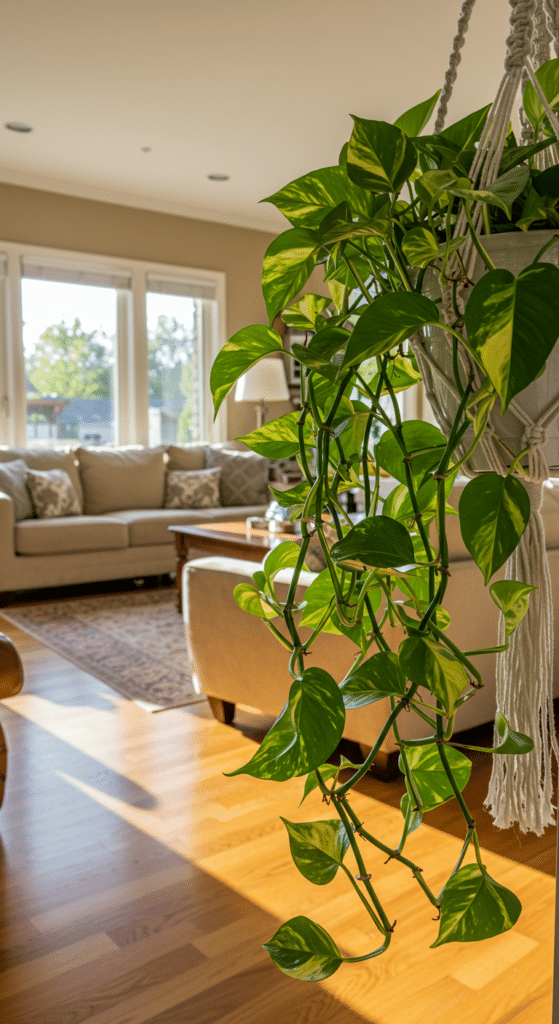
Here are 10 popular house plants. Pothos features heart-shaped leaves that come in various shades including golden-variegated, marble queen (white and green), neon (bright chartreuse), and jade (solid green).
This vining plant can trail from hanging baskets or climb up supports with guidance. Extremely forgiving, pothos thrives in a wide range of light conditions from low to bright indirect light.
It’s drought-tolerant and can go weeks without water, making it perfect for beginners. Pothos purifies air by removing toxins like formaldehyde and benzene. The vines can grow 10+ feet long indoors with minimal care.
Snake plants have stiff, upright, sword-like leaves that grow vertically from a basal rosette. Varieties range from the tall Sansevieria trifasciata to the shorter, compact Sansevieria hahnii.
Their distinctive yellow-edged green leaves or the silvery-gray patterns of Sansevieria moonshine make them architectural standouts. These plants are nearly indestructible, tolerating low light and irregular watering.
They’re one of the best air-purifying plants, converting CO2 to oxygen at night (unlike most plants), making them excellent bedroom companions.
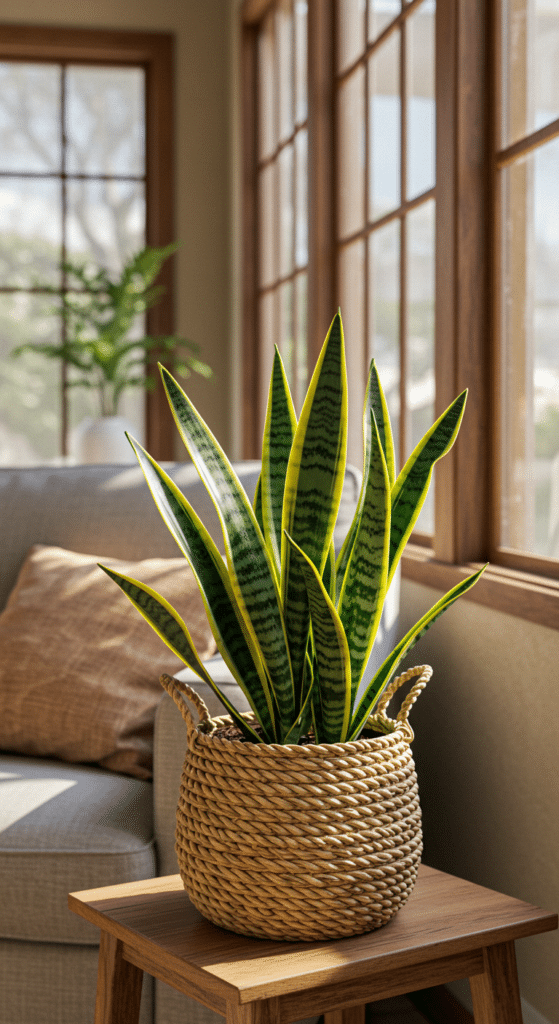
Spider plants feature arching, grass-like foliage that can be solid green or variegated with white stripes. They produce long stems with baby plantlets (spiderettes) that dangle from the mother plant, creating a cascading effect.
These plants thrive in bright, indirect light but tolerate lower light conditions. They prefer consistent moisture but can recover from occasional neglect.
Spider plants are non-toxic to pets and excellent air purifiers, removing formaldehyde and xylene from indoor environments.
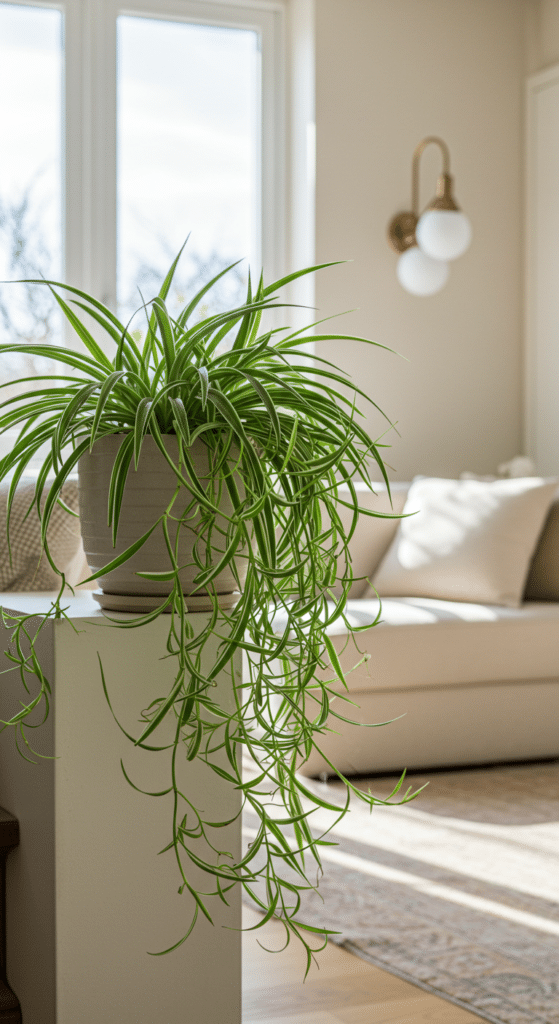
The ZZ plant sports glossy, dark green compound leaves arranged in a feather-like pattern on arching stems. Its waxy, thick leaves store water, giving it exceptional drought tolerance—it can go months without water if necessary.
It grows slowly but steadily, eventually reaching 2-3 feet tall. ZZ plants thrive in low light conditions that would kill most other plants, making them perfect for offices and dark corners. Their glossy appearance adds a sophisticated touch to any space.
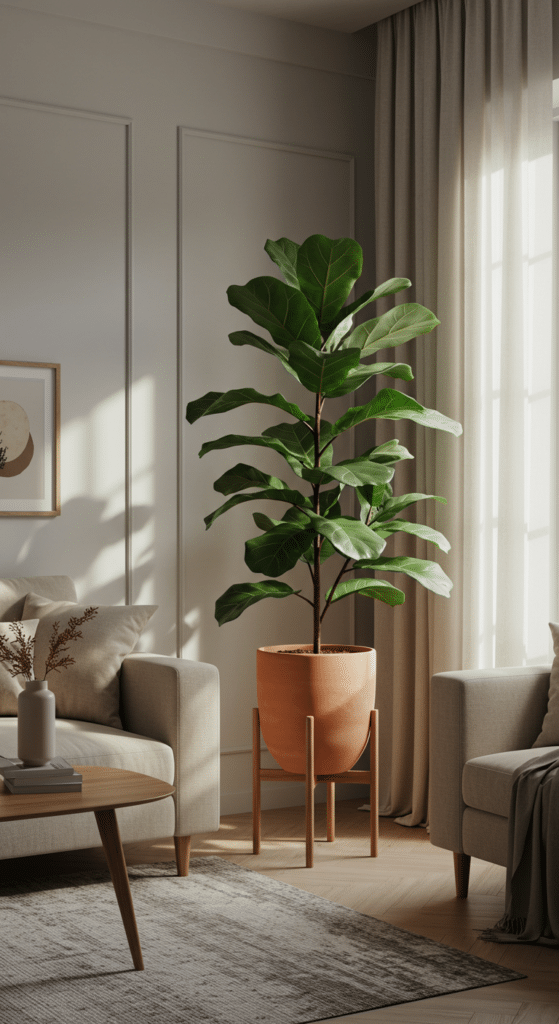
Known as the “Swiss Cheese Plant,” Monstera deliciosa is famous for its large, glossy green leaves with distinctive natural holes and splits (fenestrations).
These splits develop as the plant matures, evolving from solid heart-shaped leaves to the iconic perforated form. Monsteras can grow quite large indoors, reaching 6-8 feet tall with proper support.
They prefer bright, indirect light and moderate humidity. Their dramatic tropical appearance makes them a focal point in interior design, featured prominently in home décor magazines and social media.
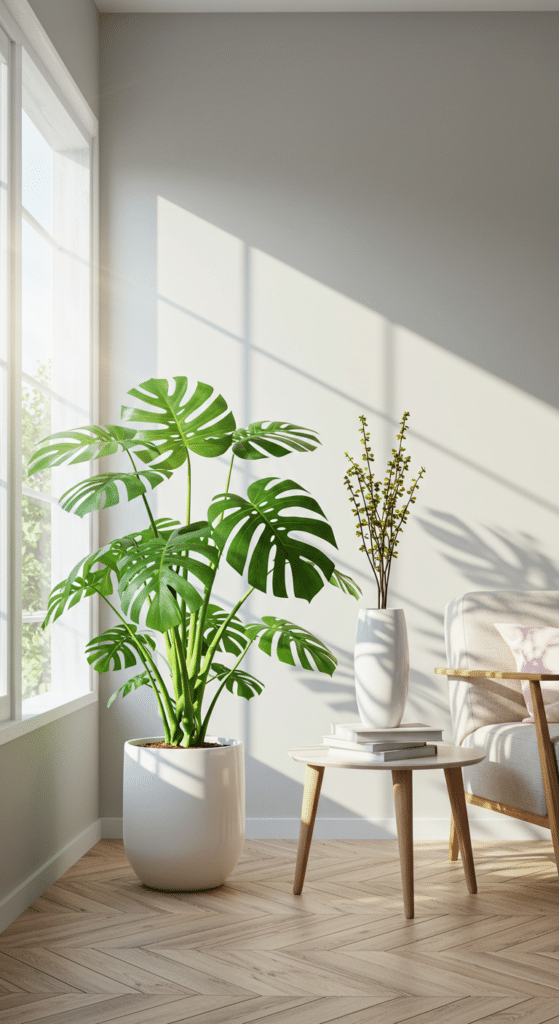
Peace lilies have glossy, dark green oval leaves and produce distinctive white “flowers” (actually modified leaves called spathes) that rise elegantly above the foliage.
These plants are one of the few flowering houseplants that bloom reliably in lower light conditions. They dramatically droop when thirsty but recover quickly with watering, making them excellent for forgetful waterers who need visual cues.
Peace lilies are exceptional air purifiers, removing ammonia, benzene, formaldehyde, and trichloroethylene from indoor air.

The fiddle leaf fig features large, violin-shaped leaves with prominent veining that can reach 12-18 inches long. These statement plants grow upright on a single trunk, eventually becoming tree-like and reaching 6-10 feet tall indoors.
They prefer consistent bright, indirect light and moderate humidity. While somewhat finicky about environmental changes, their dramatic appearance has made them the darling of interior designers and home décor enthusiasts. Their large leaves create strong visual impact and architectural interest in any space.
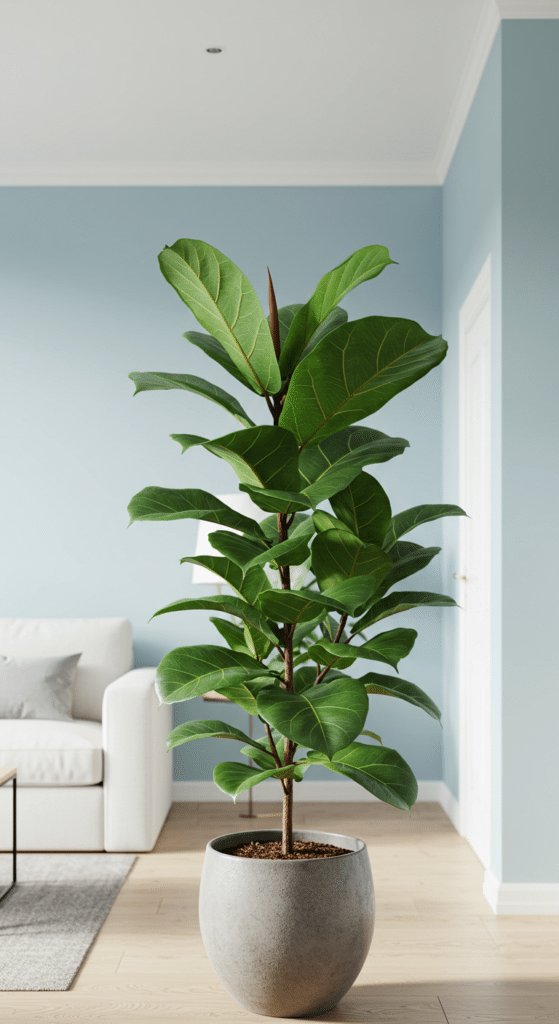
Rubber plants have thick, leathery, oval-shaped leaves that can range from deep burgundy to variegated green and cream, depending on the variety. The leaves have a glossy sheen and can grow up to 12 inches long.
These plants can grow into impressive indoor trees reaching 6-10 feet tall when mature. They’re more tolerant of lower light conditions than many other ficus varieties, though they grow best in bright, indirect light.
Rubber plants are valued for their bold, structural form and air-purifying qualities.
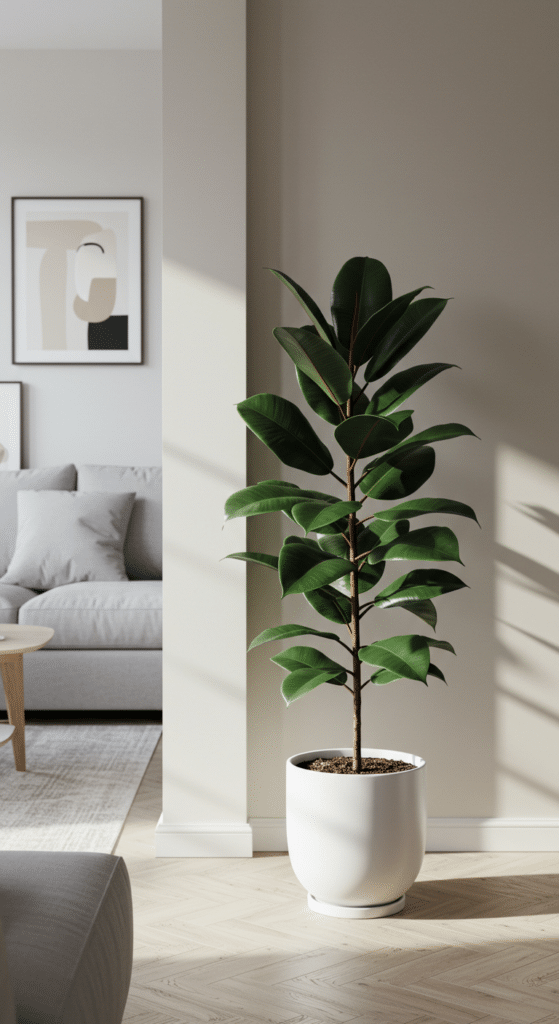
Aloe vera grows in a rosette pattern with thick, succulent, lance-shaped leaves that store water. The leaves have serrated edges and often feature white speckling.
Beyond its attractive appearance, aloe vera is prized for its medicinal gel, which soothes burns, cuts, and skin irritations.
The plant requires bright light and minimal watering, making it perfect for sunny windowsills and forgetful plant parents. Small pups or offsets regularly appear at the base, which can be separated to create new plants.
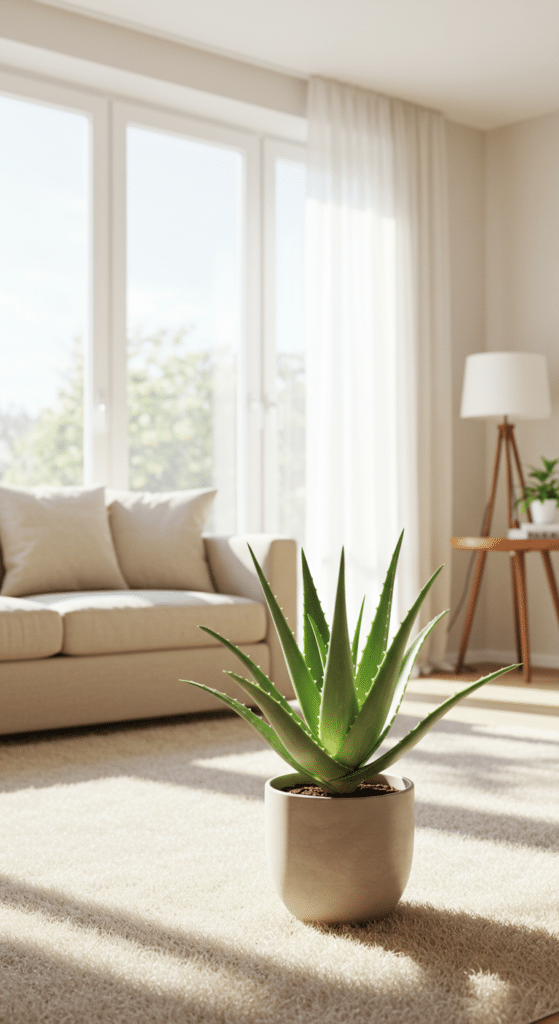
Philodendrons come in two main types: vining varieties like heartleaf philodendron with their small, heart-shaped leaves that trail or climb, and upright varieties like philodendron Xanadu with their large, deeply lobed leaves.
They adapt to various light conditions, though they prefer medium to bright indirect light. These plants are remarkably forgiving, tolerating inconsistent watering and low humidity.
Newer varieties like the pink princess philodendron (with pink variegation) and philodendron Birkin (with white pinstripes) have become highly sought-after collector plants.
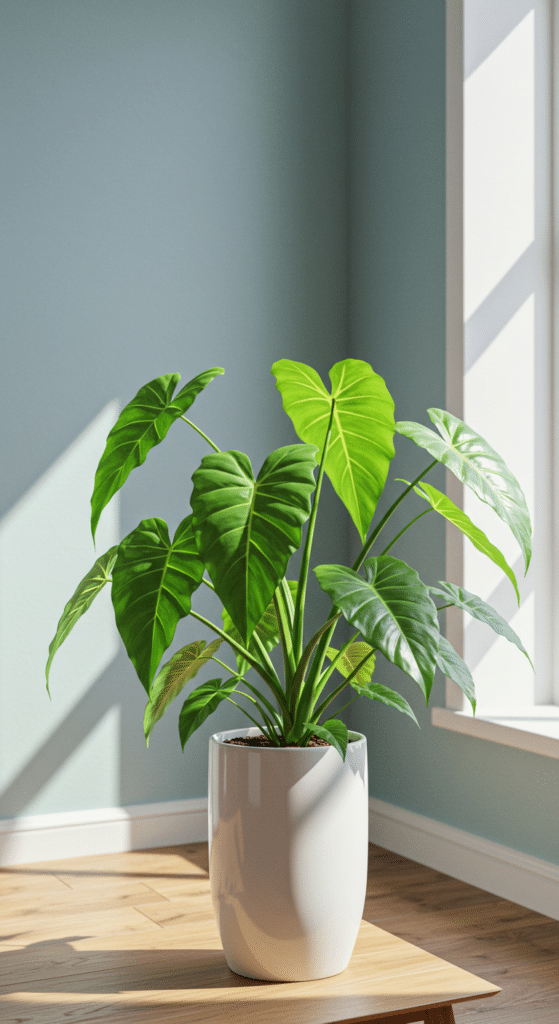
All these plants have stood the test of time as houseplant favorites due to their combination of attractive appearance, adaptability to indoor conditions, and relatively manageable care requirements.